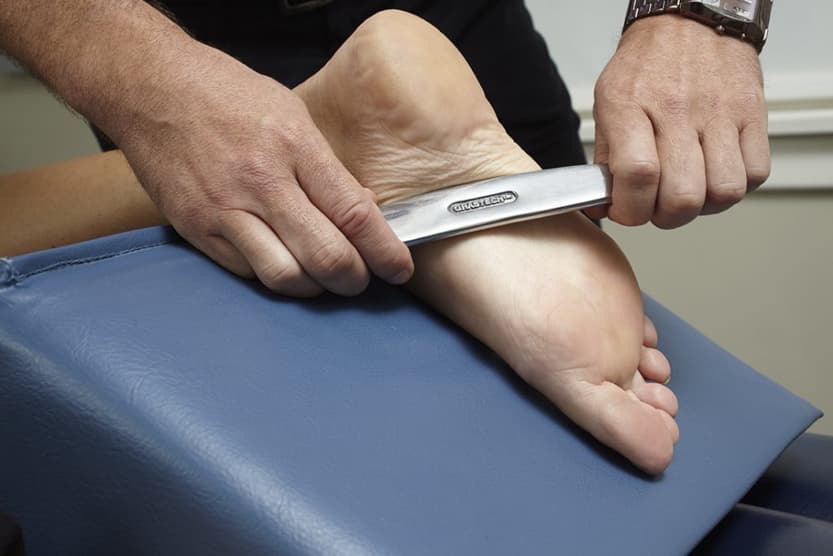Graston Technique- IASTM
(Instrument Assisted Soft Tissue Mobilization)
Graston Technique- IASTM (Instrument Assisted Soft Tissue Mobilization)
Changing the way soft tissue injuries are treated.
IASTM enables clinicians to effectively break down scar tissue and fascial restrictions.
The technique utilizes specially designed stainless steel instruments to specifically detect and effectively treat areas exhibiting soft tissue fibrosis or chronic inflammation.
IASTM offers many advantages and benefits for the patient:
- Decreases overall time of treatment
- Fosters faster rehabilitation/recovery
- Reduces need for anti-inflammatory medication
- Resolves chronic conditions thought to be permanent
GRASTON TECHNIQUE
Graston is a brand of IASTM(Instrument Assisted Soft Tissue Mobiization). The tools, much like a tuning fork, resonate in the clinician’s hands allowing the clinician to isolate adhesions and restrictions, and treat them very precisely. Since the metal surface of the instruments does not compress as do the fat pads of the finger, deeper restrictions can be accessed and treated. When explaining the properties of the instruments, we often use the analogy of a stethoscope. Just as a stethoscope amplifies what the human ear can hear, so do the instruments increase significantly what human hands can feel.
Conditions and Injuries we treat with IASTM
While the IASTM tools enhance the clinician's ability to detect fascial adhesions and restrictions, they also have been clinically proven to achieve quicker and better outcomes. Common injuries and conditions we treat with IASTM include:
- Cervical sprain/strain (neck pain)
- Lumbar sprain/strain (back pain)
- Carpal Tunnel Syndrome (wrist pain)
- Plantar Fasciitis (foot pain)
- Lateral Epicondylitis (tennis elbow)
- Medial Epicondylitis ( golfer's elbow)
- Rotator Cuff Tendinitis (shoulder pain)
- Patellofemoral Disorders (knee pain)
- Achilles Tendinitis (ankle pain)
- IT Band Syndrome
- Scar Tissue
- Shin Splints
- Trigger finger
Frequently asked questions
Is the treatment painful?
It is common to experience minor discomfort during the procedure and some bruising afterwards. This is a normal response and part of the healing process.
How are the instruments used?
The instruments are used to enhance the clinician's ability to detect adhesions, scar tissue, or restrictions in the affected areas. Skilled clinicians use the stainless steel instruments detect the tight and fibrotic tissue. Once the tissue has been identified, the instruments are used to break up the scar tissue so it can be absorbed by the body.
How many treatments does it take?
Patients usually receive two treatments per week over 4-5 weeks. Most patients have a positive response by the 3rd to 4th treatment.


